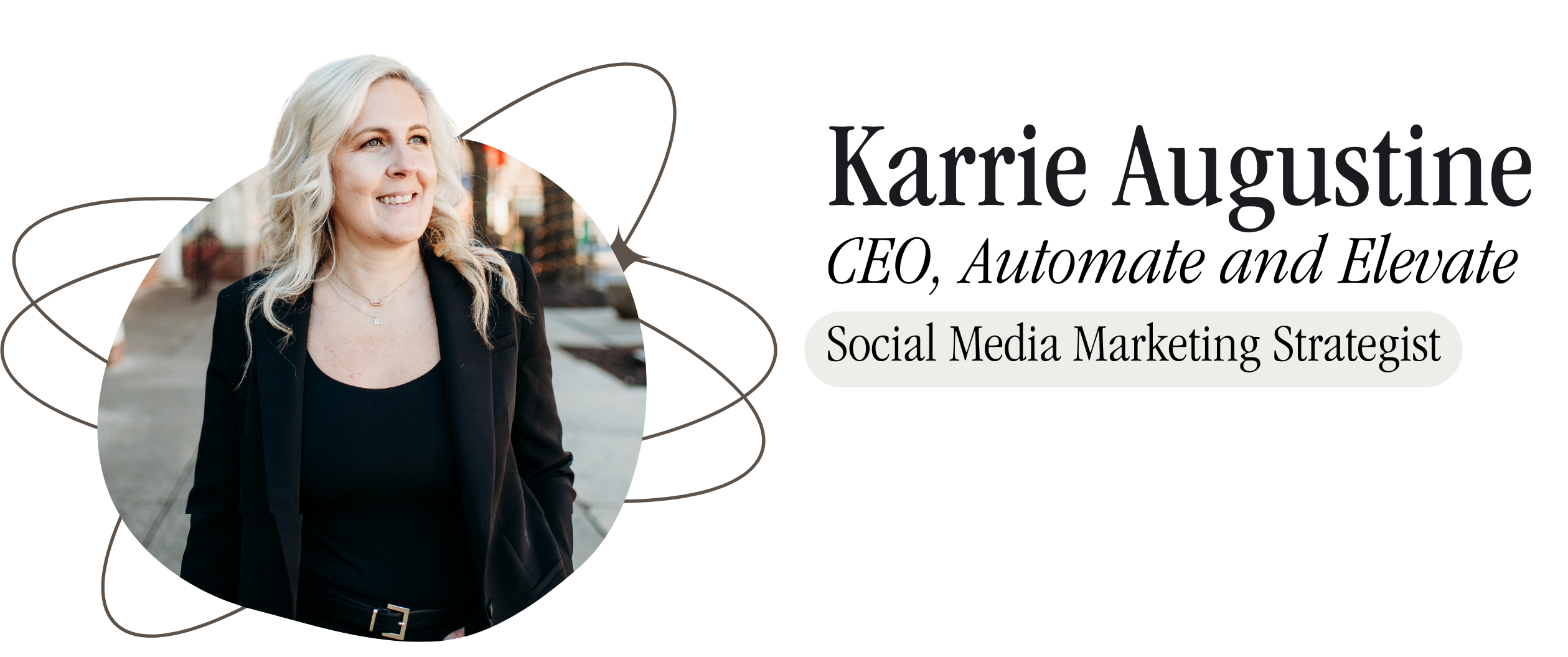
The Real Reason Your Content Isn’t Converting to Customers (And How to Change That)
The Real Reason Your Content Isn’t Converting (And How to Change That)
If you’ve been posting consistently on social media—sharing everything from family pictures to inspirational quotes to your favorite products—and you’re still not making the sales you want, you’re not alone.
Here’s the hard truth: Your content might be confusing your audience.
When people scroll past your posts, they’re not sure who you are or what you’re offering.
One day you’re the mom sharing a cute family moment, the next you’re posting beach vibes, and then you’re suddenly sprinkling in a link to a product that made you money.
It’s no wonder they’re not buying—confused people don’t convert.
But don’t worry—you don’t need to start from scratch. With a few simple shifts, you can take your content from scattered to strategic and turn your audience into loyal customers. Let’s break it down step by step.
Step 1: Identify Your “Specialty Dish”
Think of your business like a restaurant. Sure, you can make the entire menu, but what’s the ONE dish you want to be known for? What’s your specialty?
For example, if you follow a sourdough expert on social media, everything they post revolves around sourdough:
How to feed your starter
How to stretch and fold the dough
Recipes for discard
Tools to perfect your loaf
You’re not seeing random vacation posts or unrelated content. Their audience knows exactly why they’re following them—and that’s the key to building trust.
Step 2: Answer Your Audience’s Questions
Once you’ve identified your specialty, it’s time to dig into the questions your ideal customers are asking. These questions are the foundation of your content strategy.
Here’s how to find them:
1️⃣ In your comments and DMs: What questions pop up on your posts or in your inbox?
2️⃣ During conversations with customers: What do people ask you when they’re considering buying your product?
3️⃣ In online communities: Scroll through Facebook groups or forums in your niche to see what problems people are discussing.
Then, make a list of 20-25 questions that align with your specialty. For example, if you sell skincare products, your list might include:
How do I build a morning skincare routine?
What’s the best way to get rid of dark spots?
How do I layer products correctly?
These questions are your content goldmine. Each one becomes an opportunity to position yourself as the expert who has the answers.
Step 3: Position Your Product as the Solution
This is where the magic happens. Your content shouldn’t just educate—it should guide your audience toward your product as the logical next step.
Let’s go back to the sourdough example. Imagine you follow a sourdough influencer:
They offer a free guide to help you start your own sourdough starter.
You use the guide to buy the tools they recommend and bake your first loaf.
A few weeks later, they offer a paid program on maximizing discard recipes and even selling loaves.
You’ve already gotten value from their free content, so trusting them to guide you further is a no-brainer.
Your takeaway: What freebie can you create to position your product as the next step? It could be:
A guide
A checklist
A quiz
A mini-training or workshop
Not only does this freebie provide value, but it also allows you to capture your audience’s email or SMS info so you can nurture them beyond social media.
BONUS: Convert Through Nurture Sequences
Here’s the reality: People don’t buy the way they did in 2020. Today’s customers are more thoughtful and educated, often needing to see or hear about your product 8-12 times before making a purchase.
That’s where your nurture sequence comes in. It’s the bridge between capturing attention and closing the sale.
Here’s a simple 5-email framework to build your nurture sequence, with real-world examples:
Email 1: Welcome & Deliver the Freebie
Thank them for downloading your freebie and introduce yourself.
Share a quick story or explain how the freebie will help them get a quick win.
Example:
“Hey [First Name], I’m so glad you grabbed my Skincare Layering Guide! This tool will help you figure out the exact order to apply your products for glowing, healthy skin. If you have any questions while using it, just hit reply—I’d love to help!”
Email 2: Educate & Provide Value
Solve a small problem related to your product.
Example:
“Struggling to keep your skin hydrated all day? Here’s the #1 mistake people make when applying moisturizer (and how to fix it). [Insert tip].”
Email 3: Build Trust with Social Proof
Highlight a customer success story or testimonial.
Example:
“Meet Sarah. She struggled with redness and dryness—until she started using our Glow Serum. Within weeks, her skin was smoother and healthier than ever. Want to see if it can work for you? Click here to learn more.”
Email 4: Overcome Objections
Address hesitations about buying your product.
Example:
“Worried about whether our serum will work for you? Here’s how it’s different: [Insert benefits or guarantees]. Got questions? Reply, and I’ll help you decide if it’s right for you.”
Email 5: Create Gentle Urgency
Nudge them toward action with a limited-time offer or reminder.
Example:
“Ready to transform your skincare routine? For the next 48 hours, you can grab our Glow Starter Kit at 15% off. Click here to get started!”
Pro Tip: Use a tool like Automate & Elevate to schedule these emails so you can stay consistent and focused on growing your business.
Ready to Build Your List and Simplify Your Systems?
Unlock the ListBuilder BluePrint to get actionable steps for growing your email list while creating content your audience can’t resist.
Try Automate and Elevate FREE for 14 Days and discover how easy it can be to save time, nurture leads, and turn followers into customers.

